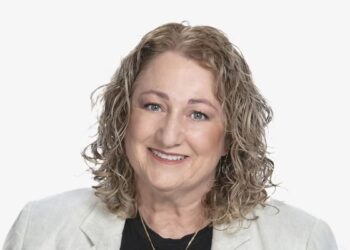Colonial First State executive manager Craig Day explained that where members receive a total and permanent disability (TPD) insurance payout, the balance may be very large and the member may only need a fraction of that benefit initially.
“They might want to take an initial payment for medical bills and to make changes to their residence in order to make it wheelchair accessible, for example, but they’ll then leave a large amount in super,” Mr Day said in a recent CFS podcast.
However, deciding to take payments from the super fund at different times can sometimes result in tax issues, he cautioned.
Speaking in the same podcast, CFS senior technical services manager Linda Bruce reminded advisers that the tax-free uplift relating to TPD payments doesn’t apply to the entire benefit in super. The calculation of the tax-free uplift is only triggered where there is a trigger event, she said.
“A trigger event would be a lump-sum withdrawal, for example, but that only triggers the calculation relating to the actual partial lump-sum payment that the member is taking, it doesn’t apply to any remaining amount,” Ms Bruce explained.
“[This means] it applies to the actual amount that the member is taking, but it does nothing to the remaining amount.”
Mr Day said if the member at some point further down the track wants to come along and take either an additional lump sum and potentially even the balance as a lump sum, whether the tax-free uplift will still apply to those additional amounts will very much depend on the circumstances.
He pointed out that if the money has been left for a long period of time, there will be growth on the original insurance payout amount.
Under the SIS regulations and in terms of how the preservation rules work, Mr Day said that when the money goes from preserved to unrestricted non-preserved and the member leaves the money in the fund, it’s the amount at the time that the trustees decides that the member has satisfied a condition of release that becomes unrestricted non-preserved.
“If you receive a $1.5 million payment and you take $500,000 out to pay off your debts and do whatever work you need to your home, and you come back in 12 months to withdraw the remaining $1 million, then there may be an extra 5 or 10 per cent in earnings, which leaves a question as to whether that growth amount is unrestricted non-preserved,” he said.
Ms Bruce explained that this will depend on whether the member still satisfies the permanent incapacity condition of release.
“If the member leaves the money there for a long period of time, the trustees still need to be satisfied that the member is still permanently incapacitated if the member wants access under that particular condition of release,” she noted.
“If, say, two or three years has passed, if there is any doubt that the trustee is not satisfied that the member is permanently incapacitated, the member will lose access to the growth portion.”
Mr Day said this is unlikely to be an issue where the member decides to withdraw additional amounts in a couple of months, as the trustee will still be reasonably satisfied that the member is permanently incapacitated.
“If you leave it there for 18 months, however, there’s a risk that the trustee might say that’s now $20,000 higher, that’s a reasonable material sum of money, we want to be satisfied that you’ve satisfied a condition of release, given the time period and the circumstances,” he stated.
“They may turn around and say, you know what, we want to see some additional medical certificates that you still satisfy that condition of release at that time.”
In terms of the remaining portion of the insurance payment, Ms Bruce said if it is simply left in the fund, then that won’t trigger the calculation of the tax-free uplift.
The ATO has implied previously that for the tax uplift to apply, the medical certificates need to be recent or valid.
However, given that there isn’t an exact definition of what is valid or recent, Ms Bruce said it is up to individual funds to interpret what is recent and what is valid and often different funds will apply different rules.
“Often different funds will apply different rules. If it’s still within six months of the member issuing the medical certificate, then most likely the fund will still apply the tax-free uplift when the additional lump sum is taken,” she said.
“However, if that period is over six months, it really depends, and very often the fund may require the member to submit additional medical certificates.”
If they aren’t able to provide that additional evidence, Ms Bruce said there is a risk that tax-free uplift may no longer apply.
Even if they take the remaining amount of a pension, it would not be regarded to be a disability benefit, and if the member is under preservation age, the member won’t be able to get the 15 per cent tax offset relating to the taxable component.
A potential strategy that some clients may consider, she said, is that when they meet the original condition of release and issue the medical certificates to the fund, they roll over the full amount to a different super fund.
“Now the rollover is considered to be one of the triggering events and when the member does that rollover, what it does to the super benefit is that the acting super fund will have to apply the tax-free uplift to the whole entire rollover benefit,” Ms Bruce explained.
“So, when the receiving fund receives the rollover amount, that amount should already be grossed up with that additional tax-free amount, so the member doesn’t have to worry about the withdrawals in the future and the tax-free uplift.”
Mr Day said this strategy would help to address potential issues with future lump sums and whether they will be regarded as a disability benefit.
“However, you may still need to worry about the growth amounts from a super perspective,” he said.


